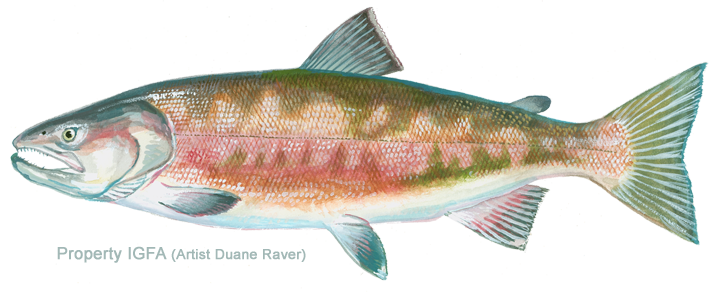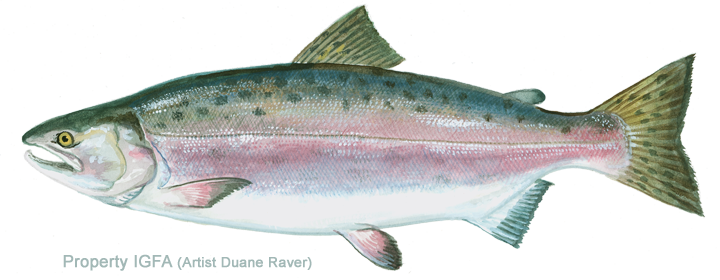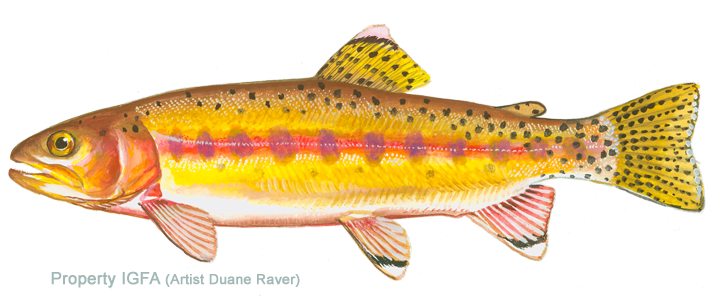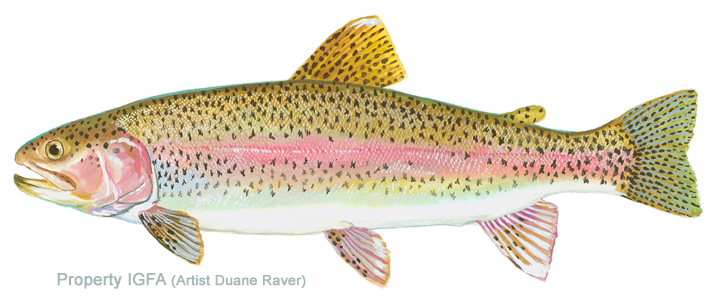Game Fish Identification Reference Guides
Salmon, sockeye
(Oncorhynchus nerka)
(Oncorhynchus nerka)
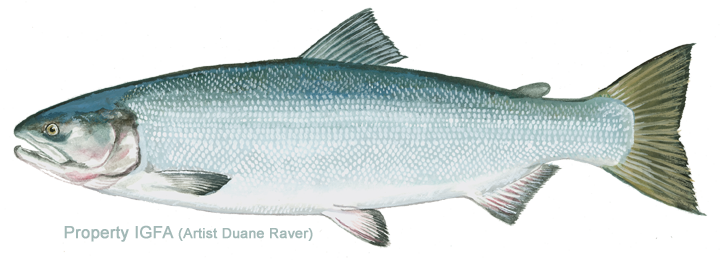
(Walbaum, 1792); SALMONIDAE FAMILY; also called sockeye, red salmon, blueback salmon, kokanee
The sockeye salmon (anadromous form of Oncorhynchus nerka) is endemic to the Pacific Ocean and its tributaries from Hokkaido in Japan to the Anadyr River, Russia, and from the Sacramento River, California to Point Hope, Alaska. Freshwater, non migratory populations, known as kokanee, occur naturally in Japan, Russia, Alaska, Washington, Oregon and Idaho, the Yukon and British Columbia and have been introduced elsewhere..
The body of breeding males is bright red with small black speckling (spots not large or distinct) on the back. The totally red body will distinguish the sockeye from the otherwise similar chum salmon, O. keta, and the lack of large, distinct spots will distinguish it from the other three Pacific salmons.
Sockeye are plankton feeders. They can be caught on a small hook baited with salmon eggs, a piece of worm, a maggot, or a small, flashy metal troll. The landlocked kokanee can be taken by fly fishing at times when they are feeding on insects at the surface.
The flesh is deep red and high in oil content. It is the most commercially valuable of all the Pacific salmons. The meat is delicious whether smoked or prepared in any of a variety of ways
The sockeye salmon (anadromous form of Oncorhynchus nerka) is endemic to the Pacific Ocean and its tributaries from Hokkaido in Japan to the Anadyr River, Russia, and from the Sacramento River, California to Point Hope, Alaska. Freshwater, non migratory populations, known as kokanee, occur naturally in Japan, Russia, Alaska, Washington, Oregon and Idaho, the Yukon and British Columbia and have been introduced elsewhere..
The body of breeding males is bright red with small black speckling (spots not large or distinct) on the back. The totally red body will distinguish the sockeye from the otherwise similar chum salmon, O. keta, and the lack of large, distinct spots will distinguish it from the other three Pacific salmons.
Sockeye are plankton feeders. They can be caught on a small hook baited with salmon eggs, a piece of worm, a maggot, or a small, flashy metal troll. The landlocked kokanee can be taken by fly fishing at times when they are feeding on insects at the surface.
The flesh is deep red and high in oil content. It is the most commercially valuable of all the Pacific salmons. The meat is delicious whether smoked or prepared in any of a variety of ways















